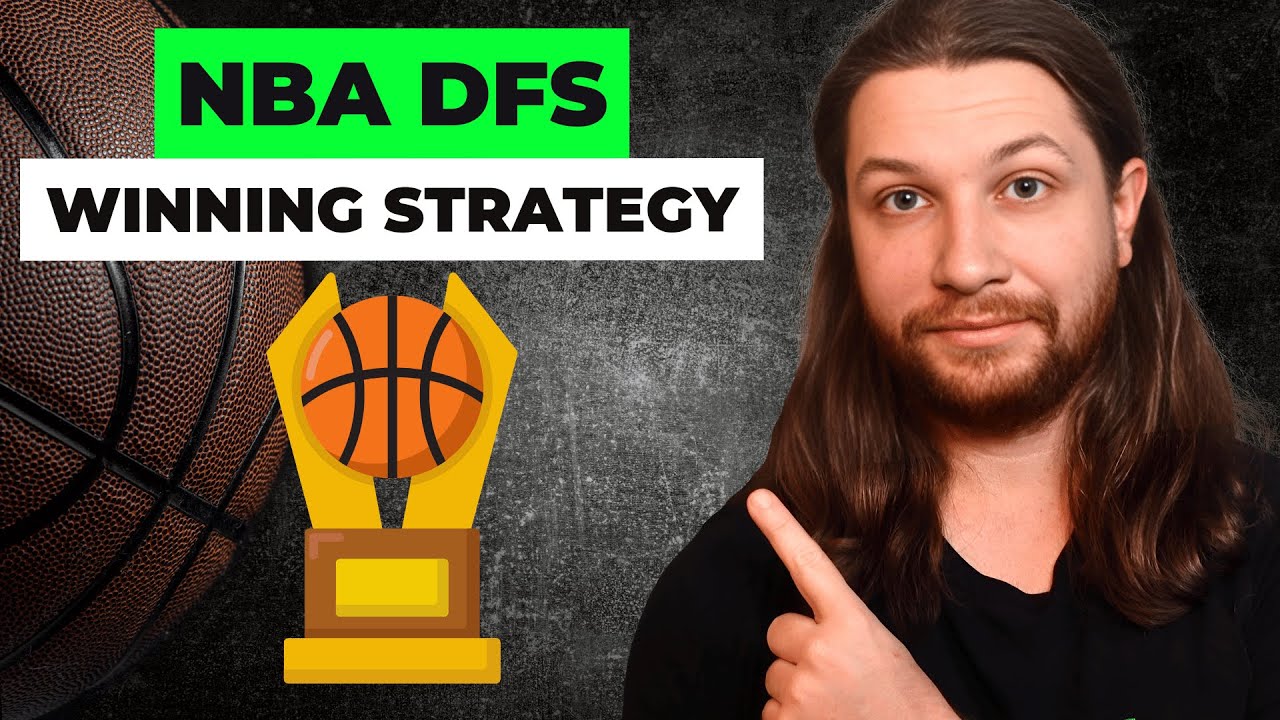How to Beat MLB DFS
In this video Jordan, the head coach at SaberSim, reveals the essential strategies to dominate MLB DFS this season. Learn how to maximize your lineup's upside, leverage lower-owned hitters, and make strategic choices to crush the competition.
MLB season is back in 2024 and I cannot wait for this year because MLB DFS has long been my most profitable DFS sport. I've been playing MLB DFS profitably for years and in this video, I'm going to lay out the fundamentals of what you need to know to crush this season. My name is Jordan, and I'm the head coach here at SaberSim, where we give DFS players the knowledge and tools you need to dominate the DFS lobby.
Whether you're brand new to MLB DFS for this season, or a seasoned vet looking for a strategy refresher, this video will give you everything you need to know to get ready for the start of the season. But make sure you stick around until the end of this video, where I'll unveil how each important part of MLB DFS strategy combined together in your lineups.
It's the answer to the most daunting question in MLB DFS, and it's the key to your profitability this season. To take down DFS tournaments, we care about upside. And to understand how to build MLB DFS lineups that have the upside we need to win, you need to understand the ranges of outcomes of players and what their upside looks like.
SaberSim's robust play by play MLB simulations let us see that. and incorporate it automatically into our lineups. So let's pull up some data and see what it looks like. This is a visualization of the range of outcomes of an MLB hitter from our simulations. There are a few things to note here that are important for DFS.
First, the average projection, the mean, is not very close to the most common outcomes, the mode. MLB hitters are not very likely to score the average projections most people use to build their lineups. Second, the upside. MLB hitters generally have huge upside, coming from their potential to hit home runs, rack up a ton of RBIs, steal bases, etc.
It is well within the range of outcomes for a player with an 8. 5 point projection to score 35 points in a game. And because most MLB hitters have that kind of upside, The 95th percentile outcomes, or the ceiling projections for most hitters, is often very similar even across big discrepancies in average projections or player salary.
The third thing to note here is the downside. The most common outcome for almost any MLB hitter in one of our simulations is scoring zero points. If you've ever watched a baseball game, you know how easy it is for even the best hitter in the game to go 0 for 4. and score zero points. Just like for Upside, most MLB hitters all have the same downside, they're all live to score zero points in any given game.
Now, I know that's a lot of data and theory, so here's the practical takeaways. Average projections alone do a terrible job of communicating the full range of outcomes of an MLB hitter. You need a simulation to incorporate these ranges of outcomes into your lineups. Even across big discrepancies in average projection, MOB hitters often converge on similar ceiling and floor outcomes.
Where this becomes practical DFS advice is when you start to consider ownership. DFS hitters with slightly better average projections will often become much higher owned than players that project slightly worse on average, but that have the same upside. You can often get insane leverage by playing lower owned hitters and give up very little ceiling projection.
But what about the correlations we see at the bottom of this data? Where does this come from and how does that factor in? You'll see a positive correlation between hitters on the same team in MLB DFS. The reason for this is because as MLB hitters start to score more points in the game, they create more opportunities for other hitters on the team to score points.
If a hitter gets on base, Even with just a walk or a single, they've lengthened the inning and the game, creating more at bats for the other hitters on the same team. Plus, a runner on base is an RBI opportunity for the next hitter at bat. Now, if you've studied NFL correlations before, your first instinct about these MLB correlations might be that they seem low.
However, when you start to factor in the fact that all the hitters on the team are correlated to each other, they start to really add up. Ronald Acuna may have a 12 correlation to Matt Olsen, but Austin Riley also has a 11 correlation to both hitters, as does Marcel Azuna, and so on. The correlation of your lineup as a whole increases more and more and more the more hitters from the same team you add to the lineup.
This is called stacking, and generally the optimal strategy for MLB DFS is to have heavily stack many hitters from the same team. But what about the pitchers? Let's pull up a pitcher range of outcomes and see what that looks like. For pitchers, we get a different picture. Pitchers are much more normally distributed than hitters are, which means that their distribution looks like a bell curve, and their most common outcomes are around their average pitch.
However, the standard deviation, or the width, of this curve is much wider than you'd see in another normally distributed sport like NBA. While the averages are the most common outcomes for MLB pitchers, extreme downside like getting lit up in the first inning and getting pulled out of the game, and extreme upside like pitching a no hitter are still possible.
possible. In practice, this means that average projections are more practical to use for picking pitchers, but you should be aware of the downside potential of any given pitcher. As for the correlations for pitchers, there are two things to note. First, pitchers will generally have a small positive correlation to their own team.
This is because pitchers get a bonus for getting a win in the game, and to get a win, the offense needs to score some runs. This isn't a huge factor because the win bonus is relatively small, and a team does not need to score a ton of runs to win if the pitcher is also pitching well, but that very small correlation is still there.
The bigger correlation to be aware of is a pitcher against the opposing team. There is, as you might expect, a huge negative correlation between pitchers and the opposing team hitters, and they should almost never be combined in lineups together, except in very small slates. Like 2 or 3 game slates where the options for lineup constructions are more limited.
So let's put this all together and break down what makes winning MLB DFS lineups. First correlated hitters, taking advantage of the increasing correlation by adding more and more MLB hitters from the same team to your lineup. is a huge way to increase the upside of your lineup because each time those hitters score points, they create more opportunities for the other hitters on the same team.
Second, be cautious of highly owned hitters. We know that MLB hitters have extreme downside and their most common outcomes are frequently 0. The field will play very popular stacks because of slight differences in average projection. We can get similar upside at a fraction of the ownership by playing less popular stacks.
Third, playing the top pitchers. Average projections are much more indicative of upside for pitchers, so looking for pitchers that are projected for huge raw point totals or are a good value relative to their salary is a great way to find upside at the pitcher spot. We should be aware of the downside potential for any given pitcher and factor ownership into our thought process when we're picking pitchers.
So it sounds easy, right? Well, it starts to get tricky when you think about how these factors combine together. In a perfect world, we could stack up the best players at low ownership on the best teams all at once. pair them with a good pitcher, and just print money. That might be how MLB DFS was 5 years ago, but the games have gotten a lot tougher today.
The field does a good job of identifying the best plays, and most of your competition knows to stack their lineups. This means that we often have to make tough decisions, sacrificing ceiling projections to get low ownership, or playing a bunch of highly owned hitters to stack up the teams in the best hitting environments.
This is the toughest question in MLB DFS. How do you balance the competing factors of correlation, projection, and ownership, especially when they are in conflict? How much projection should you sacrifice for ownership or correlation? Should you still fully stack a team up, even if they're popular? Should you always use a five stack when you're on draft Kings?
What is the amount of ownership that makes a highly projected pitcher a bad play? While I've outlined the fundamentals that will make sure that you're playing good. lineups, it's hard to figure out all these nuances that will let you play great lineups. So what's the answer? Well, most MLB DFS players will come up with rules of thumb to answer these challenging questions, but rules of thumb are simple and they lack the nuance that you need to account for to win.
And that's where simulations fit in. You can generalize and avoid the chalk, stack your lineups, and use ceiling projections and be a decent MOB DFS player. But if you want to take the next step, you need a sim. Why? Using a play by play game simulation will figure out what the best possible lineups are to play, based on how often they are the top scoring lineups in a simulation of a slate.
Instead of guessing whether or not you should be playing 3, 4, or 5 stacks of a certain team, an MLB simulation will just test it out, seeing how often those combinations show up as optimal. And an MLB DFS contest sim will take into account what lineups your opponents are most likely to play, and figure out what the most profitable ways are to exploit them.
If the Dodgers are playing in Coors with a massive run total while also being the highest owned stack on the board, a contest sim will test out how different lineups that contain Dodgers and ones that don't actually perform in the MLB contests you're playing and identify the most profitable ones to play.
Using simulations of MLB games and MLB DFS contests, we can calculate exactly what the right stack sizes and amount of projection versus ownership we should be taking with us into our contests. Simulations can be a powerful way to quickly identify the most profitable MLB DFS lineups But it's important to understand how they work to get the most out of them.
To truly harness this advantage, dive into our comprehensive guide to DFS simulations. This guide is designed to equip you with the mastery of tools that will help you crush this season. And drop a comment below this video letting me know what strategies you're most excited about using in your MLB DFS process this season.
And if you want more videos like this, to help level up your DFS game, make sure to subscribe. I'll see you in the next video.
related playlists

Unlock Expert Knowledge with SaberSchool
Master strategies, insights, and tools to outsmart the competition. Sign up for SaberSim Premium today!









